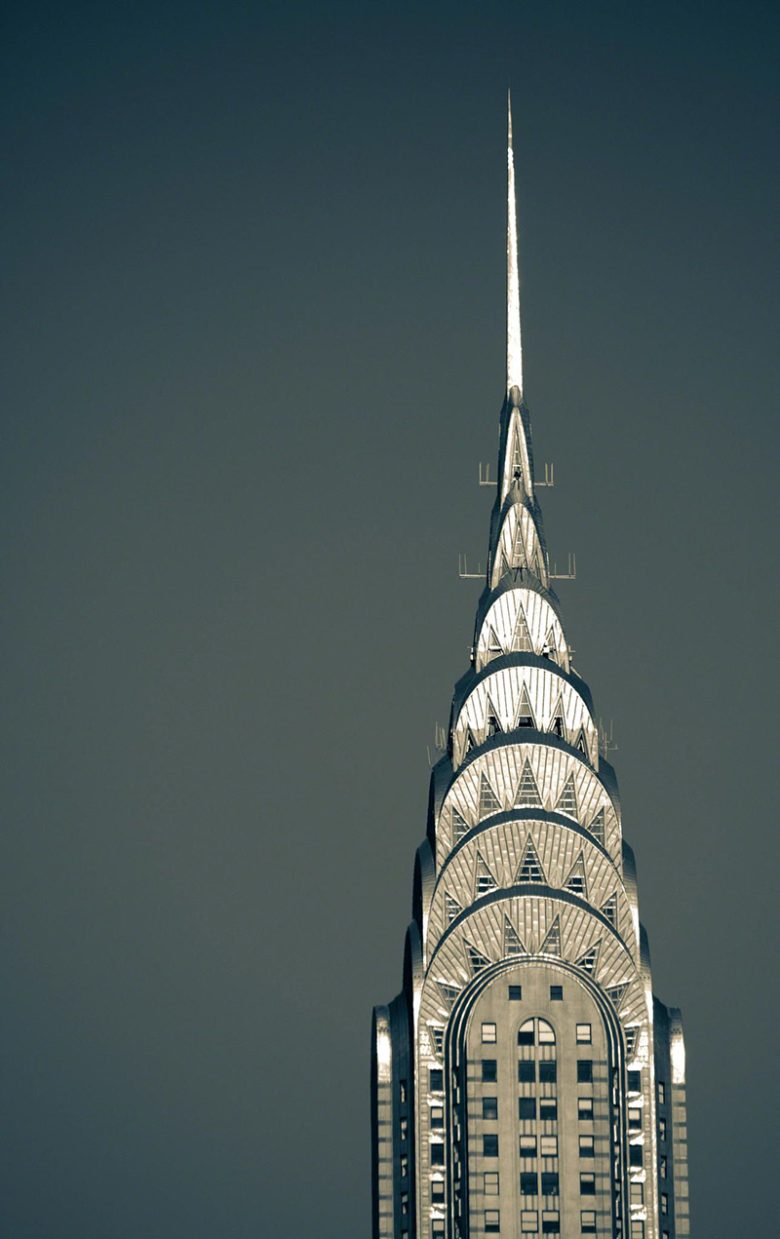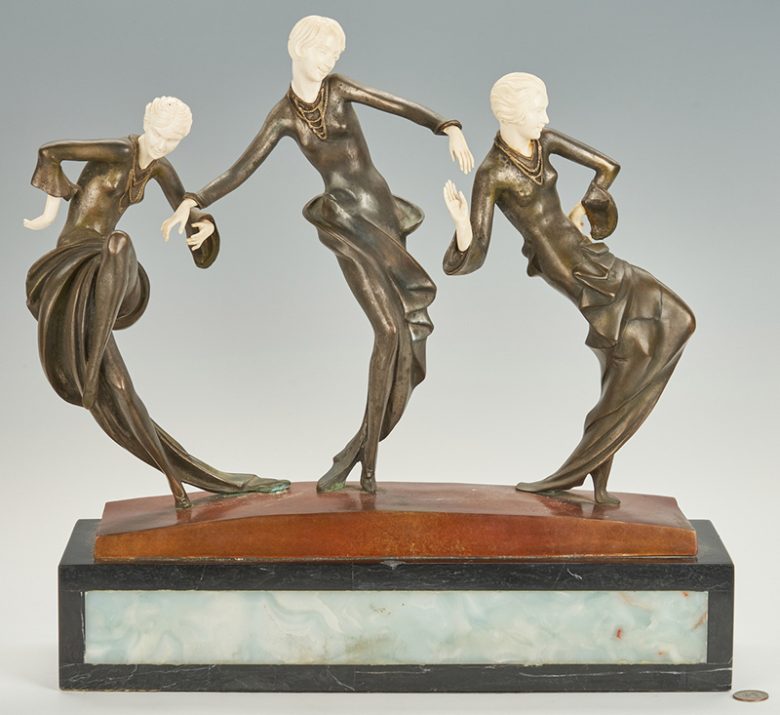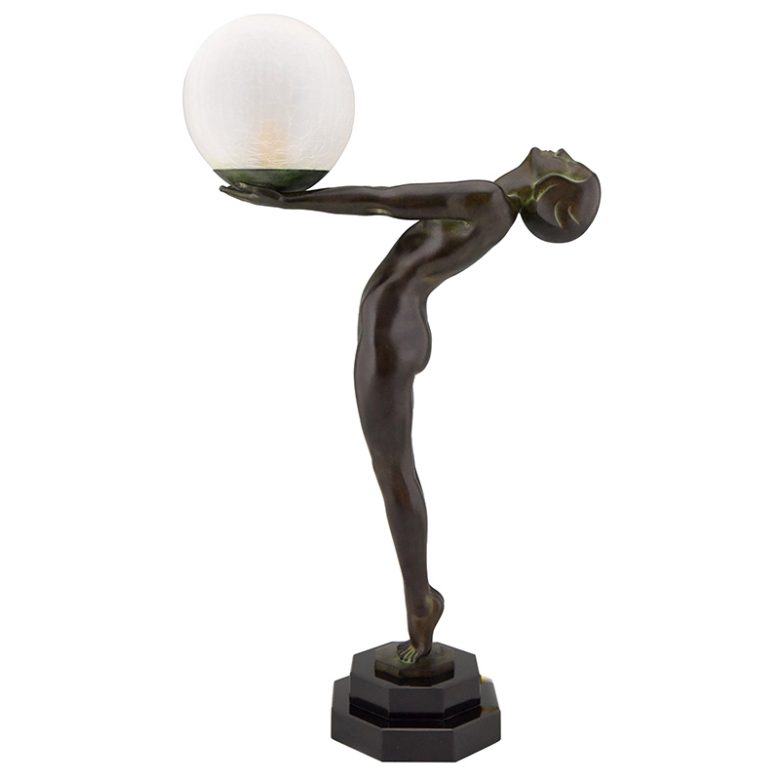The intent of Art Deco was to return decorative arts to the important place they occupied in the past. In every design rich decorative elements conveyed luxurious modernity.

The Art Deco style manifested across the spectrum of all visual arts: from architecture, painting and sculpture to the graphic and decorative arts. Art Deco artists often payed homage to modernist influences from other art styles, such as Cubism, Neoplasticism and Futurism. But the references were indirect. They were taking the end results of decades of distilling compositions to the most basic forms. The invented a new style that was visually pleasing but not intellectually threatening.
The Art Deco style originated in Paris, but has influenced architecture and culture as a whole. The works are symmetrical, geometric, streamlined, often simple, and pleasing to the eye.
This style was in contrast to avant-garde art of the period. It challenged everyday viewers to find meaning and beauty in what were often anti- traditional images and forms.
Art Deco, similar to Art Nouveau, is a movement that attempts to infuse functional objects with artistic touches. It is different from the fine arts (painting and sculpture) where the art object has no practical purpose or use beyond providing interesting viewing.
With the advent of large-scale manufacturing, artists and designers wished to enhance the appearance of mass-produced functional objects: everything from clocks and ashtrays to cars and buildings. Art Deco’s pursuit of beauty in all aspects of life was directly reflective of the relative newness and mass use of machine-age technology rather than traditional crafting methods to produce many objects. The Bauhaus German school was also interested in industrial production, but in a sense it is the polar opposite as it refrained from artistic embellishments, choosing instead, clean and simple geometric forms.
Art Deco ethos diverged from Art Nouveau and the British Arts & Crafts styles, which emphasised the uniqueness and originality of handmade objects and featured stylised, organic forms.
That crafted quality was emblematic of a kind of elitism in opposition to Art Deco’s more egalitarian aim: to make aesthetically appealing, machine-made objects that were available to everyone
Streamline Moderne, the American Art Deco style was a stripped- down and sleek version of the more elaborate and often bespoke European Art Deco. In many ways, the Americans grew and evolved to have a much bigger following in America than in Europe.
By the end of the 19th century in France, many notable artists, architects and designers who had played important roles creating in the Art Nouveau style recognised that it was becoming increasingly passé (old fashion). At the close of an era that saw the Industrial Revolution take hold, contemporary life became very different from a few decades earlier. It was time for something new, something that would shout 20th Century from tasteful, modernist rooftops.

Society of Decorative Artists
From this desire to move into the new century in step with innovation rather than being held back by nostalgia, a group of French artistic innovators formed an organization called the Societé des Artistes Décorateurs in Paris. The group was comprised of both well-known Art Nouveau figures such Eugene Grasset, designer and printmaker and Hector Guimard, architect, along with emerging decorative artists and designers such as Pierre Chareau and Francis Jourdain. The French state supported and fostered this direction of artistic activity. One of the major goals of the new group was to challenge the hierarchical structure of visual arts that relegated decorative artists to a lesser status than the more classical painting and sculpture.
They resolved to return decorative art, inconsiderately treated as a Cinderella allowed to eat with the servants, to the important, almost preponderant place it occupied in the past, of all times and in all the countries of the globe.

The plan for a major exhibition presenting this new type of decorative art was originally conceived for 1914. But it had to be pushed back until after World War I ended and then postponed for various reasons until 1925.
The French government hosted the exposition between the esplanade of the golden-domed Les Invalides and the entrances of the Petit Palais and the Grand Palais on both sides of the Seine River. They endeavoured to showcase the new style. Ironically, Modernist painting and sculpture played a secondary role in the exhibition with the few exceptions of the Soviet pavilion and Le Corbusier’s Esprit Nouveau pavilion.
The 1925 Art Deco Exposition Internationale in Paris was the catalyst for the beginning of the movement. Over 15,000 artists, architects and designers displayed their work. During seven months, over 16 million people visited the numerous shows.

Art Deco and Art Nouveau

Art Deco was a direct response, aesthetic and philosophical, to the Art Nouveau style and to the broader cultural phenomenon of Modernism. It began to fall out of fashion during World War I. Many critics felt the elaborate detail, delicate designs, often expensive materials and production methods were ill-suited to a challenging, unsettled and increasingly more mechanised modern world. While the Art Nouveau movement derived its intricate, stylised forms from nature and extolled the virtues of the hand-crafted, the Art Deco aesthetic emphasised machine-age streamlining and sleek geometry.
The Paris Exposition Internationale brought together not only works in the Art Deco style, but put crafted items next to avant-garde paintings and sculptures from other movements like Cubism, Constructivism, Bauhaus, Neoplasticism and Futurism. By the 1920s, Art Deco was an exuberant, but largely mainstream, counterpoint to the more cerebral Bauhaus and De Stijl aesthetics. All three styles shared an emphasis on clean, strong lines as an organising design principle. Art Deco artists embraced technological innovation, modern materials and mechanisation.

They learned from other modernist movements. Art Deco came to be regarded by admirers who were in-step with the forward-looking perspectives of contemporary avant-garde movements.
Since the 1960s, there has been a steady interest in the style. Echoes of Art Deco can be seen in Mid-Century Modern design, which carries forward the streamlined aesthetic of Deco. It also helped to inspire the Memphis Group, a design and architecture movement in Milan during 1980s. Memphis also drew from Pop Art and Kitsch for its colourful, consciously postmodern designs.
Art Deco District Miami (Florida) is the largest architectural cluster Art Deco in the world. It offers houses, buildings, hotels and museums built between 1920 and 1940. A walk through Ocean Drive provides a great view of the striking style in America.
Art Deco, a movement that in many respects sought to break away from the past, has now become a nostalgic, fondly remembered classic.


